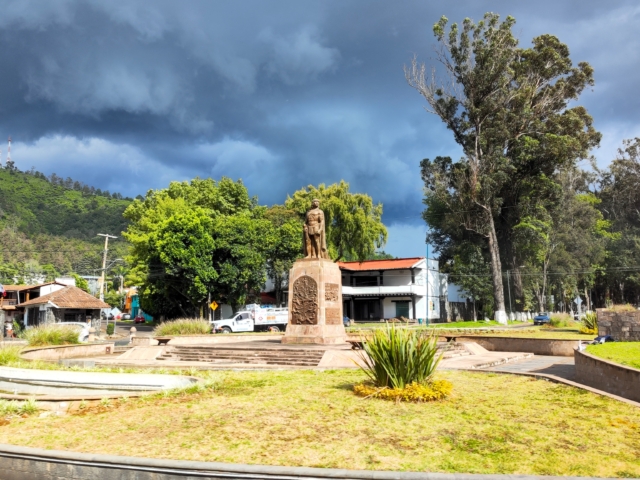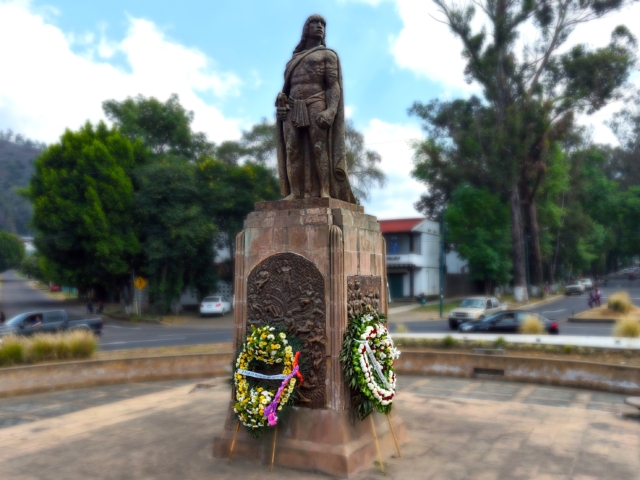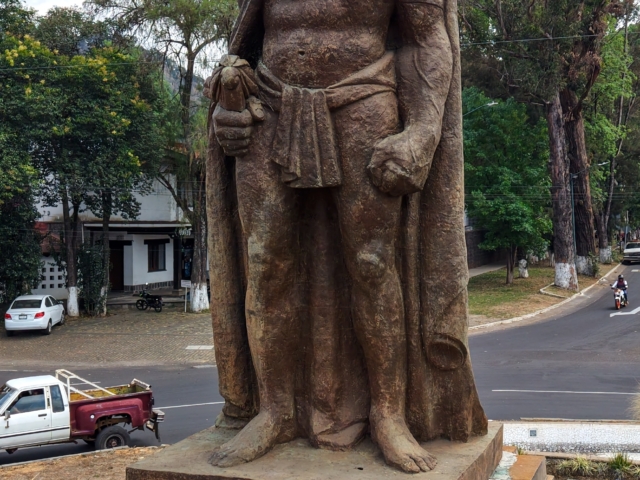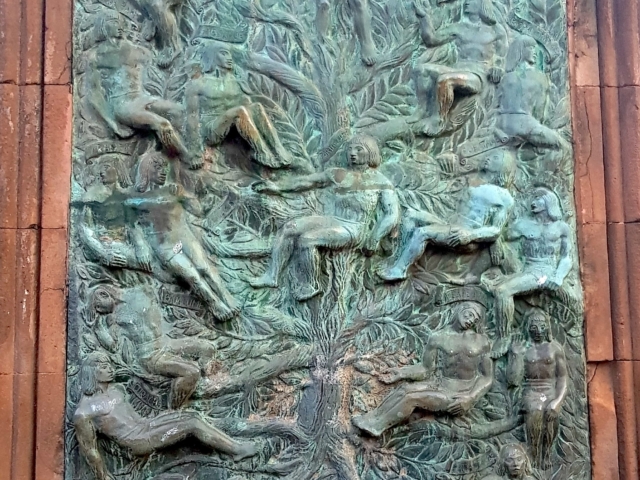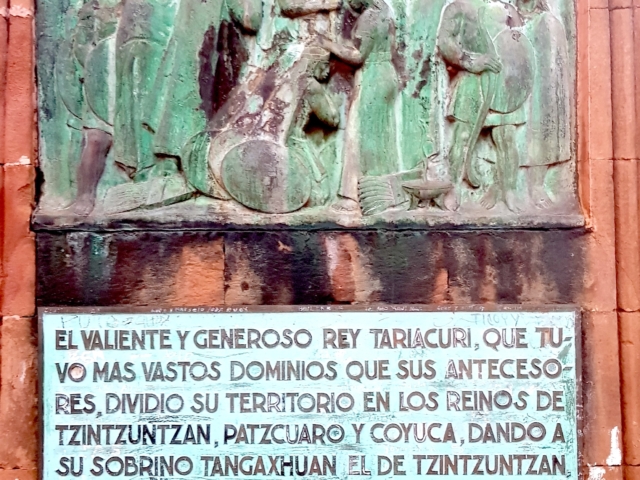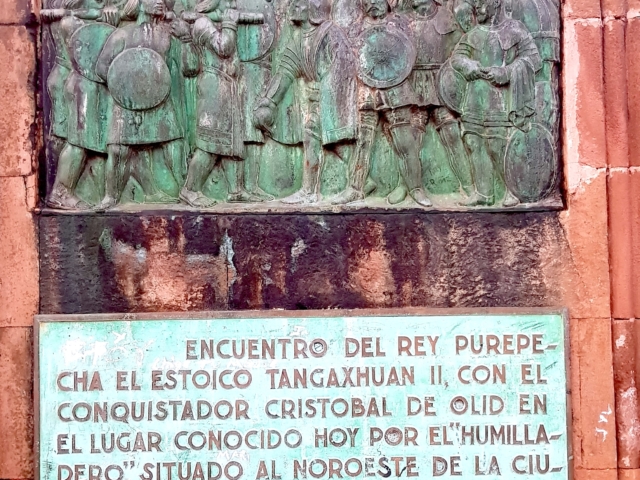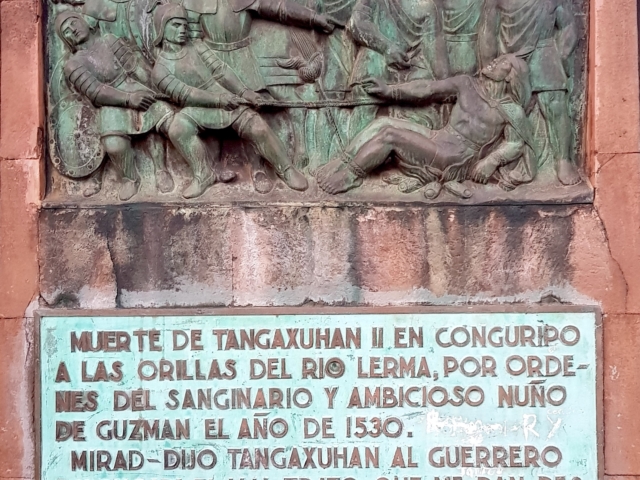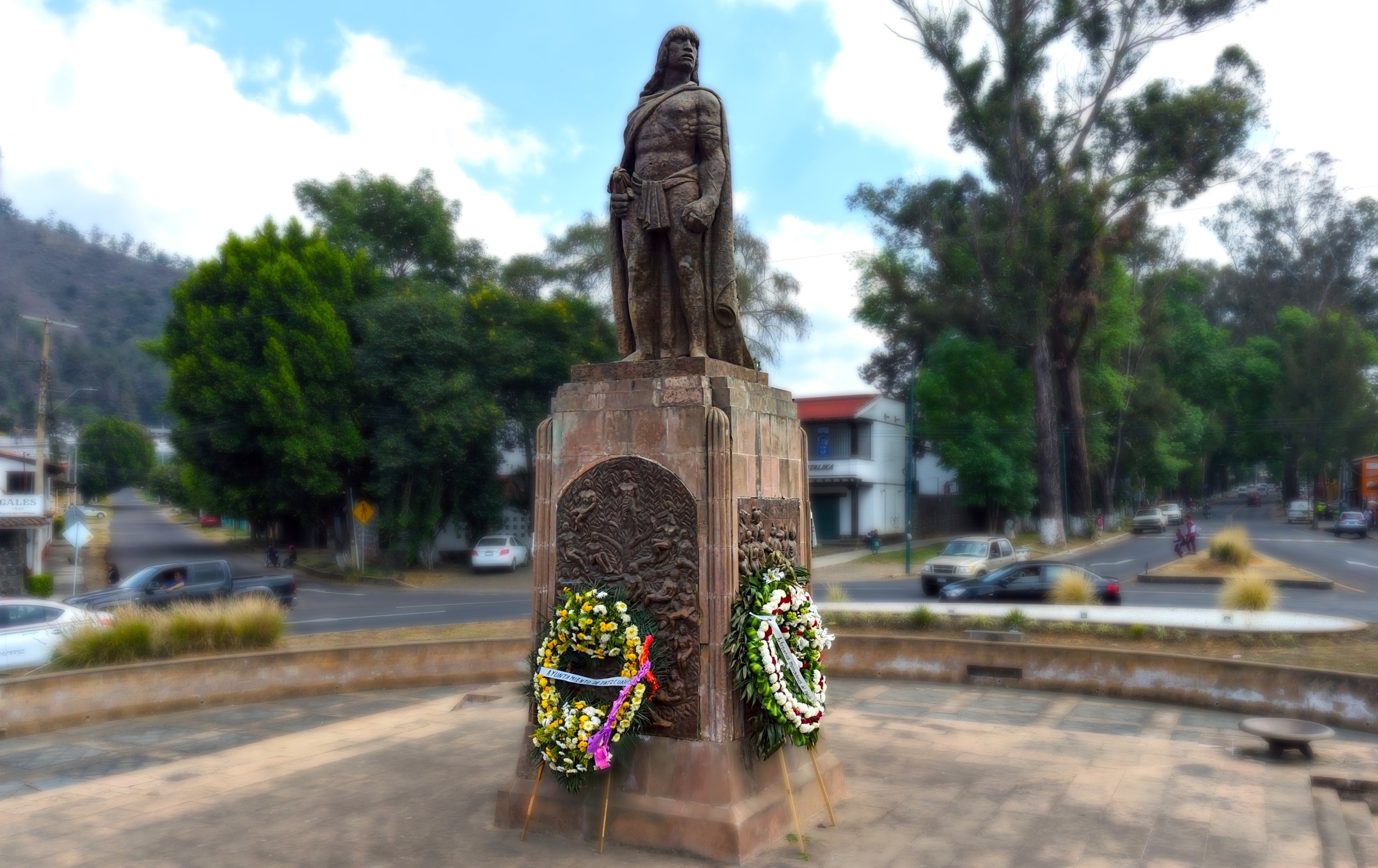
Adress
Glorieta de Tanganxoan, Pátzcuaro, Michoacán, México.
GPS
19.52966040792, -101.61002755165
KNOW MORE PLACES
VISITA OTRAS LOCALIDADES
The history of the Tangaxoan II Monument in Pátzcuaro, Michoacán, is a vibrant testament to the cultural resilience and historical memory of the Purépecha people. This monument not only honors a brave leader, but also strengthens the pride and identity of an entire community.
Historical context of Tangaxoan II
Tangaxoan II, also known as Tzíntzicha Tangaxoan, was the last Cazonci (supreme ruler) of the Purépecha Empire. His rule coincided with the arrival of the Spanish in 1522. To avoid a tragedy similar to the fall of Tenochtitlán, he decided to surrender to Cristóbal de Olid, but managed to maintain a certain autonomy. However, in 1530, Tangaxoan was falsely accused of conspiracy by Nuño de Guzmán and brutally executed: he was dragged by a horse, strangled, and burned at the stake. His tragic death sparked rebellions led by his legendary daughter, Eréndira.
Creation of the monument
The Tangaxoan II monument was created during a period of strong post-revolutionary Mexican nationalism, promoted by President Lázaro Cárdenas, who promoted indigenous art. The talented sculptor Guillermo Ruiz designed the statue in 1938, in Art Deco style, inspired by the “Relación de Michoacán.” The statue is 3 meters high and stands on a 3.64 meter stone pedestal. Tangaxoan is depicted with prominent indigenous features, looking towards Lake Pátzcuaro and holding a baton of command as a symbol of authority.
Artistic details
Pedestal: El pedestal incluye relieves de bronce con escenas históricas que capturan momentos clave de su vida:
- Meeting with Christopher of Olid (1522)
- Death at the stake ordered by Nuño de Guzmán (1530).
- Family tree of the Tarascan kings.
Registrations: Texts taken from colonial chronicles, such as “Michoacán, landscapes, traditions and legends” by Eduardo Ruiz (1891).
Location and symbolism
The monument is located at the Glorieta de Tangaxoan, near Cerro Blanco. Its location reflects the vindication of the pre-Hispanic past and cultural resistance. In addition, the site has become a meeting point for annual ceremonies honoring its legacy.
Current commemorations
Cada February 14th, Pátzcuaro conmemora el aniversario de la muerte de Tangaxoan II. En 2025, se celebró el 494° aniversario con eventos que incluyeron:
- Traditional ceremonies: Offerings, dances and Purépecha music.
- Symbolic tour: From the statue to the Huitzimengari Palace, former home of his son Antonio Huitzimengari.
- Handing over the baton of command: Ritual where indigenous leaders transfer the responsibility of organizing future commemorations.
- Purépecha flag: Four women hold the flag, whose colors represent the Purépecha regions.
Cultural legacy
The monument not only honors Tangaxoan II, but is also a symbol of indigenous unity and resistance. In addition, events such as talks and educational exhibits reinforce its historical relevance.
Curiosidades
- Quinta Eréndira: A Lázaro Cárdenas rest home is named after Tangaxoan's daughter, with murals telling her story.
- Bust in ConguripoSince 2010, a bust near the Lerma River marks the spot where he died.
In short, the Tangaxoan II monument in Pátzcuaro is a bridge between the past and the present, where art, history and resistance intertwine to keep the Purépecha memory alive.

